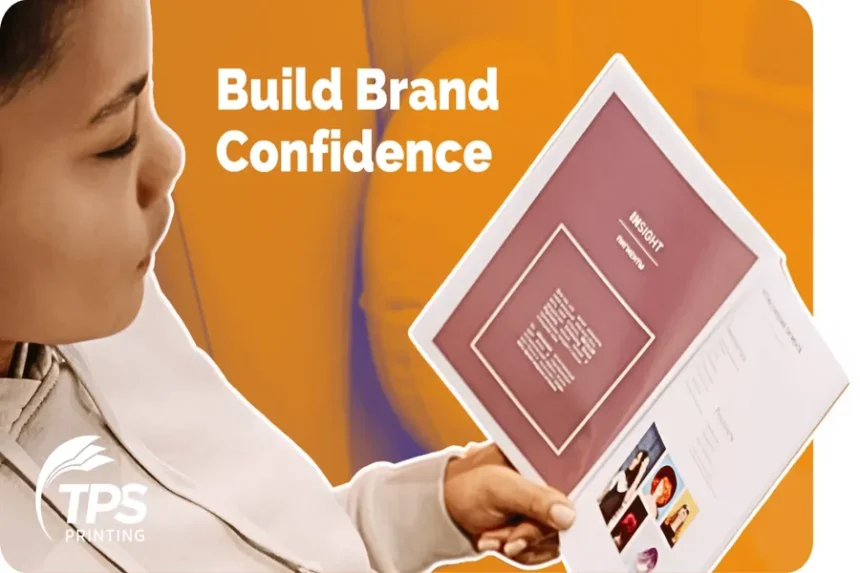Printed Booklets vs. Digital Content: A Surprising Memory Divide
In a world where screens dominate most communication, one might assume that digital content offers the most lasting impact. Yet, research consistently demonstrates that printed materials—especially booklets—outperform digital information regarding memory and brand recall. Businesses aiming for high retention and deeper emotional connections increasingly turn to booklet printing, finding it to be effective for delivery and uniquely powerful for audience engagement. The difference between print and digital is more than nostalgia. Multiple studies have found that participants exposed to printed booklets recall details, visuals, and messages more than those who consumed the same information online. This divide has significant implications for marketers, educators, and organizations striving to ensure their messages truly stick with their intended recipients.
The Science Behind Tangible Media and Recall
Cognitive research reveals that the physical nature of print fundamentally enhances memory formation. Holding a booklet, turning its pages, and feeling the differing weights or finishes activate multiple senses, setting print materials apart from their digital counterparts. According to a recent article in Forbes, print’s sensory stimulation triggers deeper encoding in the brain, making it easier for people to recall content later on. The multi-sensory experience offers substantial recall advantages. When information is input through several senses at once, the connections made in the mind are stronger and more accessible after the initial interaction. Unlike quick-scrolling social feeds, printed booklets encourage slower engagement—a factor proven to boost comprehension and recall for all age groups.
What Makes Booklets So Effective for Information Retention
Unlike flyers or larger catalogs, booklets usually group information into conveniently sized, cohesive packages that users are inclined to revisit. Booklets reduce cognitive overload and support retention by dividing complex content into digestible sections, supported by effective use of visuals and ample white space. As pages are flipped and milestones are reached, the feeling of progression helps readers identify where information lives within the document—another win for recall. Psychology points to “location memory,” where people remember content based on its physical position within a booklet. This tactile, spatial quality is virtually impossible to achieve with scrolling or swiping digital alternatives, providing print a distinct edge in information-heavy environments like healthcare, education, and business communications.
Strategies Brands Use to Leverage Print Recall
Many forward-thinking brands combine booklets with digital channels for a hybrid approach. Booklets can introduce a product, summarize a complex service, or feature detailed how-tos, seamlessly driving recipients to additional digital resources like websites or video tutorials. Personalized print—incorporating names or custom content—makes each booklet feel exclusive, increasing engagement and recall rates. For loyalty campaigns, booklets serve as physical reminders of value. Schedules, tips, and limited-time offers within pages encourage repeated reference, extending a brand’s presence on desks and kitchen counters for weeks or months. Consistency of design and messaging across print and digital fosters trust while multiplying touchpoints.
Design Principles That Maximize Booklet Engagement
Smart booklet design is central to achieving higher recall. Strong, legible typography aids understanding and helps draw attention to what matters most, while high-quality images or infographics are visual anchors for key points. Color choices can cue emotions and highlight important messages, while generous use of whitespace reduces visual fatigue and helps content feel approachable. Organizing information into clearly defined sections, using headers and short blocks of text, enables readers to find and remember what they need. Features like checklists, bulleted summaries, or interactive elements (such as QR codes) can further reinforce engagement and aid recall by prompting action beyond the initial read.
The Role of Distribution and Targeting in Booklet Success
Strategic distribution magnifies the impact of printed booklets. Direct mail campaigns put custom materials into specific hands, while in-person events or point-of-sale displays introduce booklets in relevant, high-impact moments. Because print is inherently harder to ignore than digital ads, recipients are likelier to engage with content—leading to greater recall, even if the booklet is only skimmed initially. Many organizations also pair distribution with feedback loops, using voucher codes, web addresses, or follow-up surveys to monitor response and measure engagement. This seamless integration of print and digital yields insights for future campaigns while reinforcing the stickiness of the printed message.
Sustainable Printing and Consumer Trust
As sustainability gains priority, modern booklet printing has evolved to meet environmentally conscious preferences. Choosing recycled paper, soy-based inks, or working with printers committed to responsible sourcing can bolster consumer trust while strengthening brand reputation. Research indicates that highlighting eco-friendly initiatives in print materials signals authenticity and responsibility—qualities that resonate with today’s audiences. Studies referenced in industry forecasts confirm that demand for “green printing” is growing, and businesses that showcase their sustainability efforts tend to see stronger brand loyalty and higher response rates with printed campaigns.
Emerging Trends in Print Media and Their Impact on Learning
The world of print marketing is constantly evolving. New technologies now enable the creation of interactive booklets that bridge the gap between print and digital. Features like augmented reality and smart QR codes link readers to videos, surveys, or product demos, providing rich experiences without sacrificing print’s proven recall benefits. Personalization is also on the rise; booklets created for specific customer segments or individuals foster a feeling of exclusivity that drives engagement. As noted by print design experts, integrating fresh creative elements or eco-friendly finishes can help your booklet remain memorable, relevant, and effective for years to come.
Inspiration for Your Next Booklet Campaign
No matter your industry, printed booklets provide a versatile tool to enhance recall and engagement. For educators, they serve as study aids that students reference repeatedly. For service businesses, booklets can outline processes or maintenance schedules, making life easier for customers and boosting satisfaction. Brands seeking to stand out in crowded markets turn to tactile, thoughtfully designed print to leave a mark that digital alone cannot achieve. By focusing on high-quality design, sustainable production, and strategic distribution, your next booklet campaign can outlast fleeting digital messages and anchor your brand in the minds of your audience. The enduring recall power of print is proof that, in an age of rapid change, some classic strategies are more effective than ever.




